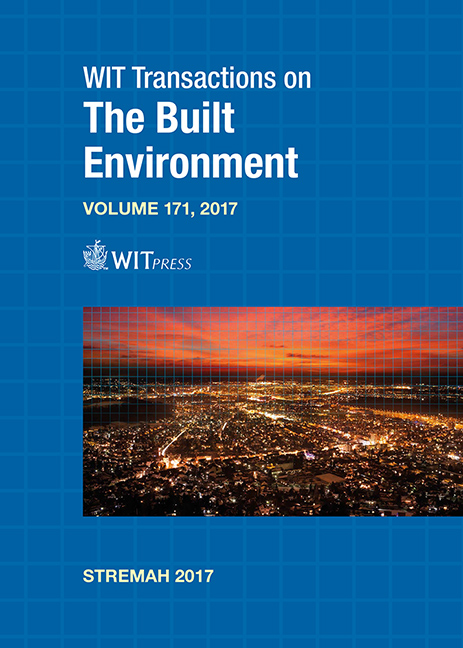TRADITIONAL MARKETS IN ISLAMIC ARCHITECTURE: SUCCESSFUL PAST EXPERIENCES
Price
Free (open access)
Transaction
Volume
171
Pages
11
Page Range
263 - 273
Published
2017
Paper DOI
10.2495/STR170231
Copyright
WIT Press
Author(s)
KABILA FARIS HMOOD
Abstract
Contemporary cities are aiming to deal with architectural and urban heritage as a vital entity that can adapt to the modern life style and needs without sacrificing the region’s identity and uniqueness, especially those cities that are historically and culturally profound, which has resulted in the possession of the architectural and urban heritage. Many Islamic cities worldwide are proud of their traditional markets. The market in Islamic cities has revived the city through its presence, while the city has formed the market according to its needs.
The main aim of this research is to verify the importance of lessons learned from old traditional markets in Islamic architecture which is characterized by the effective response to their physical environment. This main aim leads to many secondary aims. Firstly, the research aim to explain the relationship between the specialization of goods and the architectural form and general planning of the market, where the perpendicular or broken (bend) axis or any change in direction was an indication of the in change the types of goods. Secondly, the research aim to explore the relationship between the diversity of the physical environment of markets and the diversity of goods and then the diversity of the corridors width and the roofing style, and how this diversity affects shoppers and generates a state of pleasure and social interaction between the market and the shoppers and among the shoppers themselves. This leads to the importance of studying the concept of “traditional markets”, resulting in the awareness of the importance of contemporary architecture which is linked to its’ historical background and the population’s awareness of that important relationship. To fulfill the research aim, this research studies and analyzes some successful effective case studies in the Islamic and the Arab world in an attempt to set a framework to design contemporary markets which have their distinct identity and special characteristics that meet the needs of the community. Based on the research findings and data analysis, the research anticipates setting its conclusions and recommendations.
Keywords
Islamic architecture, morphology, architectural environment, formation of traditional markets, urban fabric, traditional architecture, suq, physical environment




